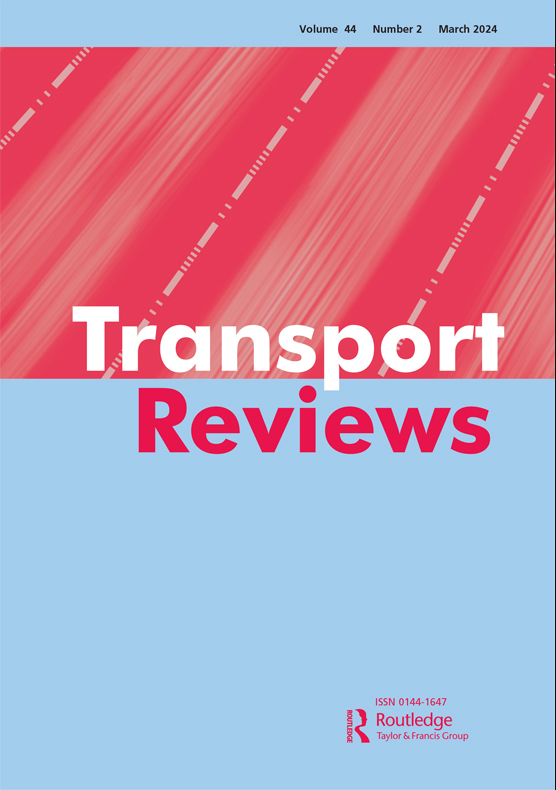Measuring transport-associated urban inequalities: Where are we and where do we go from here?
IF 9.9
1区 工程技术
Q1 TRANSPORTATION
引用次数: 0
Abstract
Reducing urban inequalities is at the forefront of the global sustainable development agenda, as well as national and local policies. While existing measures of inequality are mostly focused on income and wealth, it is widely recognised that non-monetary disparities such as in health, education, and housing play a crucial role in creating and reinforcing inequalities. Transport plays a central role in mitigating inequalities by enhancing access to employment, education, and essential services. It is also directly and indirectly related to disparities in housing, neighbourhoods, and health. Policymakers increasingly recognize the potential of transport policies in addressing inequalities; however, the effects of interventions need to be understood beyond the transport sector only and should consider wider impacts. In this review, we concentrate on three interlinked sectors – housing, land-use, and transportation – where local governments possess some capacity to influence the processes by which inequalities are created and exacerbated. Currently, empirical research on inequalities within these domains is fragmented. Models and datasets used for scenario testing, planning, and intervention evaluation are often disjointed, sector-focused, and rarely consider distributional effects. Our aim is to critically review the literature across different disciplines and perspectives and propose future interdisciplinary directions towards better measurement and modelling of transport-associated inequalities.
衡量与交通相关的城市不平等现象:我们身处何地,何去何从?
减少城市不平等现象是全球可持续发展议程以及国家和地方政策的重中之重。尽管现有的不平等衡量标准主要集中在收入和财富方面,但人们普遍认为,非货币方面的差距,如健康、教育和住房方面的差距,在造成和加剧不平等方面发挥着至关重要的作用。交通通过增加获得就业、教育和基本服务的机会,在缓解不平等方面发挥着核心作用。交通也直接或间接地与住房、社区和健康方面的不平等有关。政策制定者越来越认识到交通政策在解决不平等问题方面的潜力;然而,对干预措施效果的理解不能仅限于交通部门,还应考虑更广泛的影响。在本综述中,我们将重点关注三个相互关联的领域--住房、土地使用和交通--在这些领域中,地方政府拥有一定的能力来影响不平等的产生和加剧过程。目前,有关这些领域内不平等现象的实证研究比较零散。用于情景测试、规划和干预评估的模型和数据集往往相互脱节,以部门为中心,很少考虑分配效应。我们的目的是批判性地回顾不同学科和视角的文献,并提出未来的跨学科方向,以便更好地测量和模拟与交通相关的不平等现象。
本文章由计算机程序翻译,如有差异,请以英文原文为准。
求助全文
约1分钟内获得全文
求助全文
来源期刊

Transport Reviews
TRANSPORTATION-
CiteScore
17.70
自引率
1.00%
发文量
32
期刊介绍:
Transport Reviews is an international journal that comprehensively covers all aspects of transportation. It offers authoritative and current research-based reviews on transportation-related topics, catering to a knowledgeable audience while also being accessible to a wide readership.
Encouraging submissions from diverse disciplinary perspectives such as economics and engineering, as well as various subject areas like social issues and the environment, Transport Reviews welcomes contributions employing different methodological approaches, including modeling, qualitative methods, or mixed-methods. The reviews typically introduce new methodologies, analyses, innovative viewpoints, and original data, although they are not limited to research-based content.
 求助内容:
求助内容: 应助结果提醒方式:
应助结果提醒方式:


